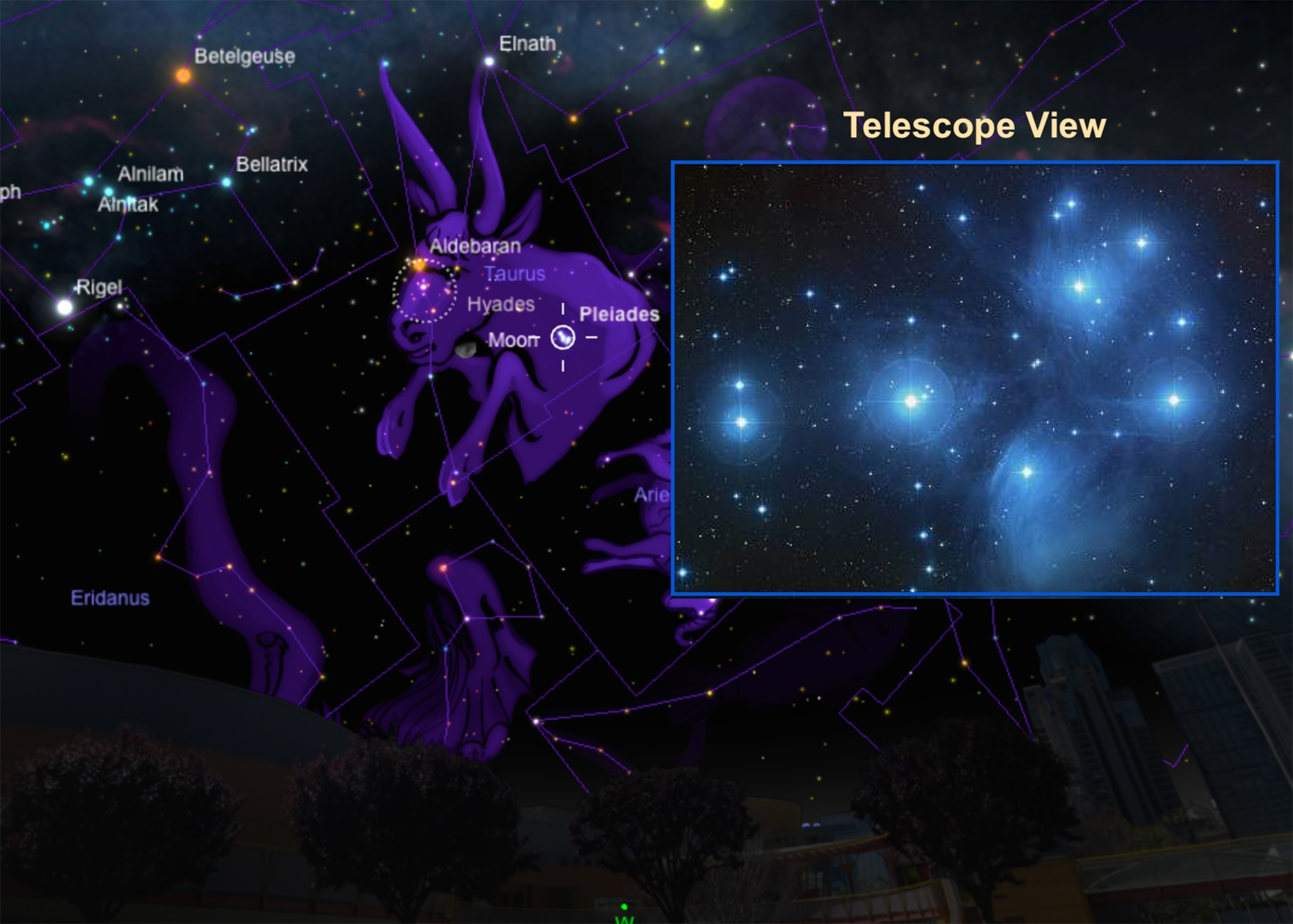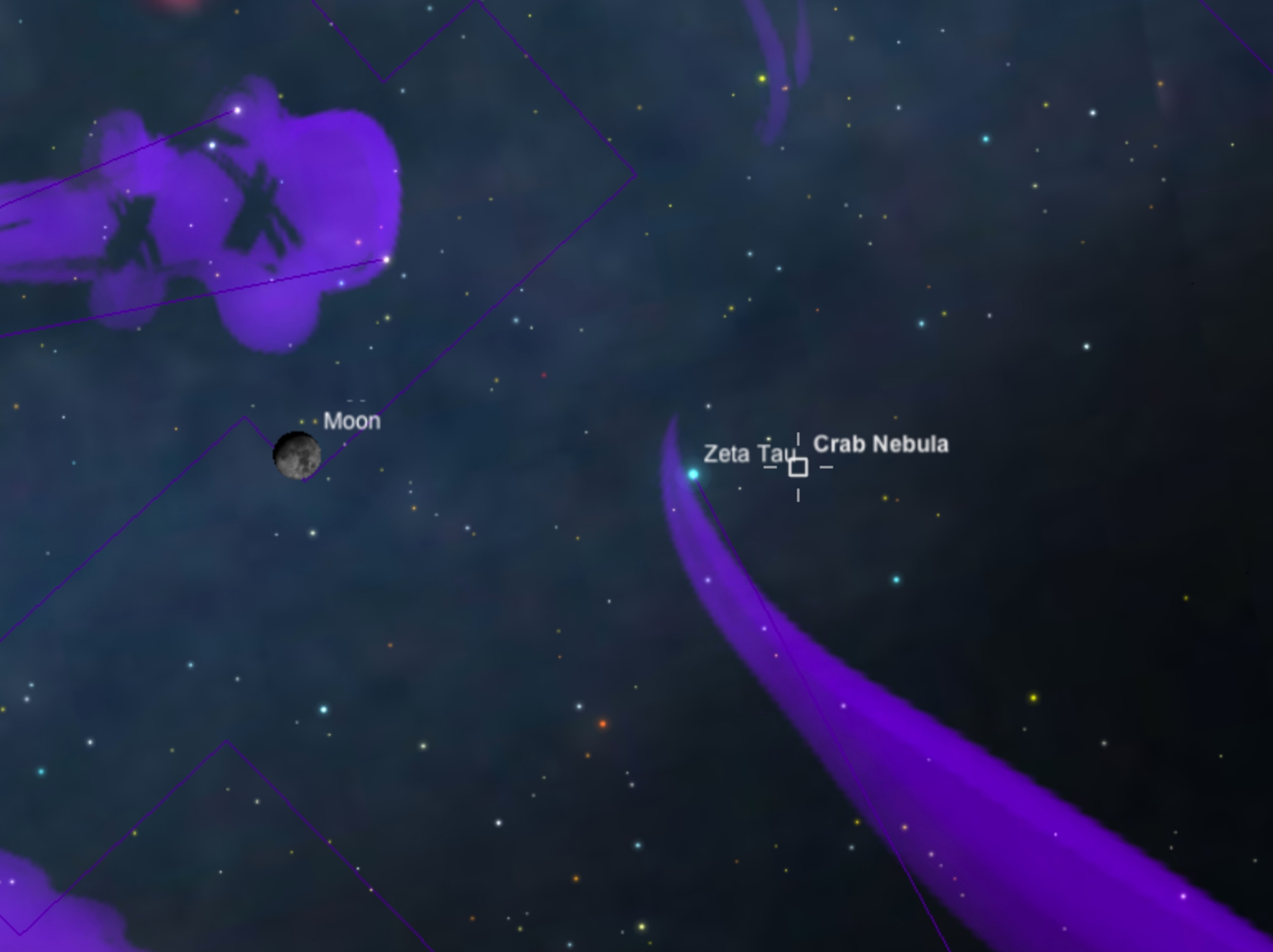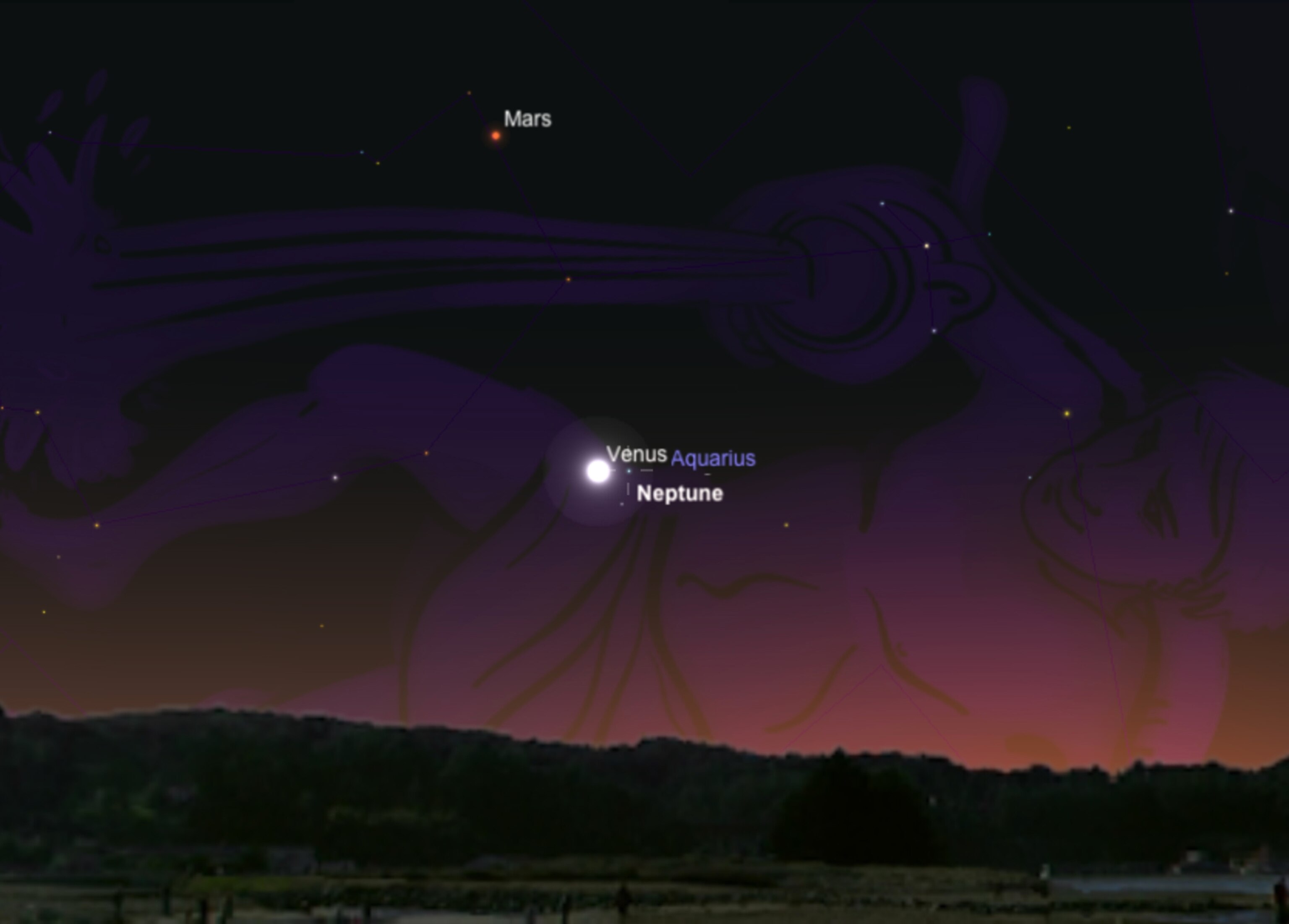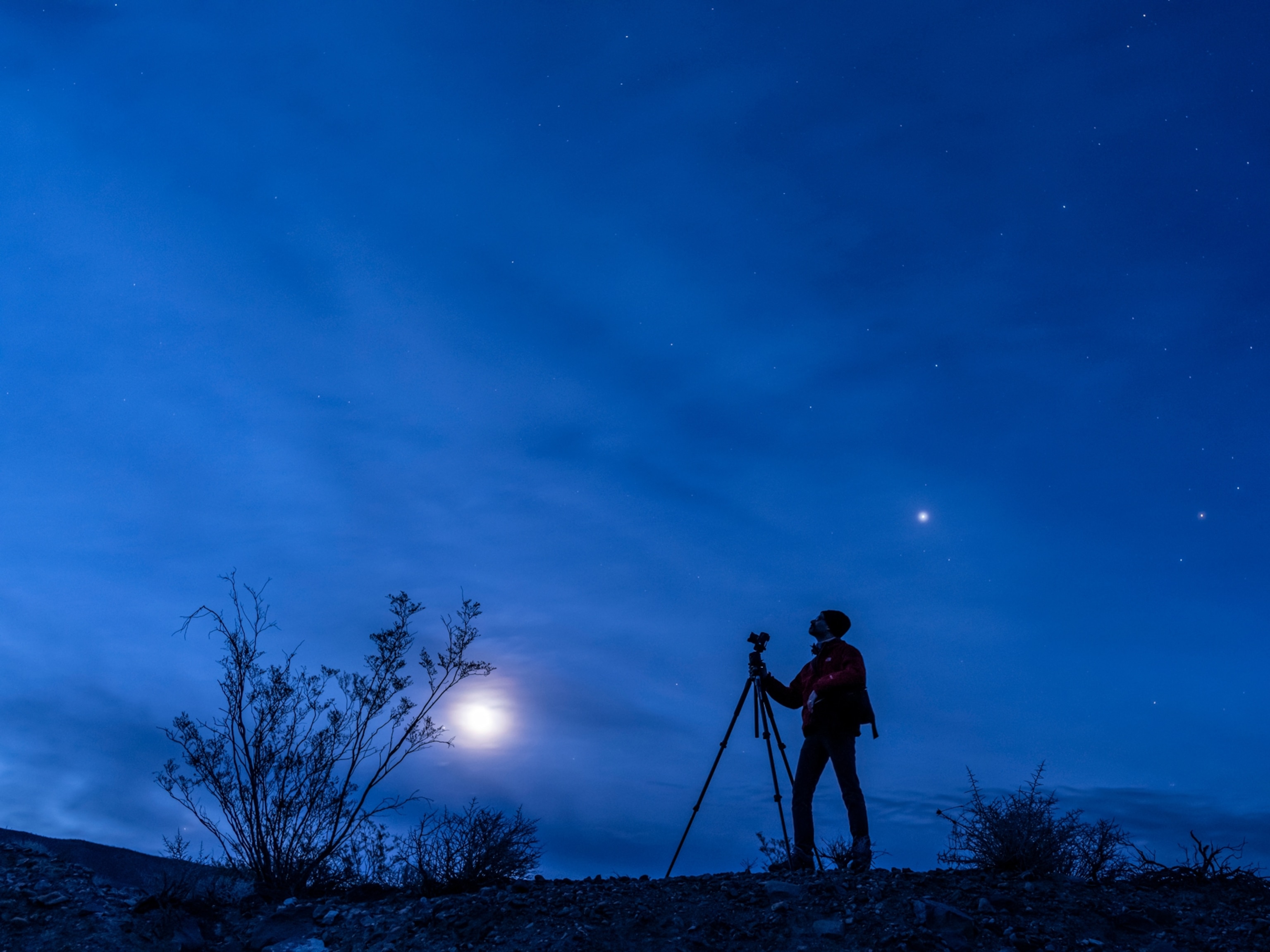
5 Sky Events This Week: Blue Giant, Crab Nebula, and Jovian Shadows
Seven Sisters stand revealed, while Io, one of Jupiter's moons, plays hide and seek.
Venus snuggles up with Neptune for stargazers this week, while the moon points to the remnants of an ancient stellar blast. Backyard astronomers, meanwhile, confront the challenge that comes from a Jovian moon's vanishing act. And don't forget that tonight an asteroid will zip through the skies for your viewing pleasure.
Seven Sisters. Look for the waxing gibbous moon (a little more than half full) after local nightfall on Wednesday, January 28, and the lunar orb will appear next to the stunning Pleiades open star cluster.
Also known as the Seven Sisters from Greek mythology, this fuzzy patch of stars takes the shape of a tiny version of the Big Dipper. The group of stars is easily glimpsed with the naked eye, even from the suburbs where the glare from streetlights competes with the starlight.
Stargazers using binoculars and small telescopes to glimpse the Seven Sisters will see a jewel box of dozens of white diamonds huddled together in the sky. Look carefully through the eyepiece under low magnification to catch sight of the faint blue nebulosity that still swaddles these hot, young stars that reside some 400 light-years from Earth.

Bull's eye. On the next evening, Thursday, January 29, the moon will have slid closer to Aldebaran, the red eye of Taurus, the Bull.
A dying star, the red giant lies some 65 light-years from Earth. That means that its ruddy starlight left on its journey in 1950, when U.S. President Harry Truman ordered the development of the first hydrogen bomb and the Korean War broke out.
Crab Nebula. By Friday, January 30, the waxing gibbous moon shines next to a star, Zeta Tau, that marks the tip of one of Taurus's long horns. The star serves as a convenient guidepost to the famed Crab Nebula, the best known example of a supernova remnant, the glimmering ashes of a shattered star. The star's explosion was noted by Japanese and Chinese astronomers, and likely Native Americans as well, in the year A.D. 1054.
Look for the faint Crab Nebula, also known as Messier 1, approximately 5 degrees to the right of the moon. That's slightly less than the width of three middle fingers held at an arm's length.
The nebula shines faintly at magnitude 9, making it just visible through binoculars but an easy target for even small backyard telescopes. The expanding cloud sits about 7,000 light-years from Earth.

Jovian eclipse. Late night on Saturday, January 31, backyard scopes trained on Jupiter's moon Io can watch it fade from view as it undergoes an eclipse. Starting at 10:45 p.m. EST, the volcanic moon will go dark as Jupiter's shadow envelops it.
This eclipse can be glimpsed with very steady binoculars, but is best viewed through telescopes on high magnification.
Venus and Neptune. Early evening on Sunday, February 1, look for superbright Venus in the low southwestern skies. It will be parked next to one of the most challenging of all planets to observe in the solar system.
The tiny, blue-tinged disk of Neptune will be shining at only magnitude 8 about an hour after local sunset, making it a target best viewed using binoculars or a telescope.

The ice giant will be approximately 1 degree to the northwest of Venus. That will make the pair fit into the same field of view under low magnification through a small backyard telescope.
Happy hunting!
Follow Andrew Fazekas, the Night Sky Guy, on Twitter, Facebook, and his website.





